A Complete Guide to the Boston Marathon Course
This article originally appeared on Outside
When it comes to running marathons, there's nothing quite like Boston.
The long history of the Boston Marathon, the challenge and prestige of trying to qualify for it, and the local Patriots' Day enthusiasm that's always tied to it.
It's a mid-April rite of spring that's synonymous with the daffodils blooming in Copley Square, the Red Sox playing in Fenway Park, and your running fitness rounding into form after a long winter.
Of all of the Marathon Majors, the Boston Marathon feels the least like an international race through a big city and more like a well-organized neighborhood race put on by a local running club.
Running the race is a multi-sensory spectacle unparalleled anywhere else in the running world. You train hard to qualify (or raise money for a charity). You submit your application and hope to make the cut. Then once you get in, you start training for--and are suddenly obsessed by--the Newton Hills. But, as anyone who has run the course at least once will tell you, the Boston Marathon is so much more than just those nefarious hills.
RELATED: Jacky Hunt-Broersma is Ready to Run in the Boston Marathon's Para Athletics Division
Follow along as we take a journey through the course from start to finish.
Hop on the Bus
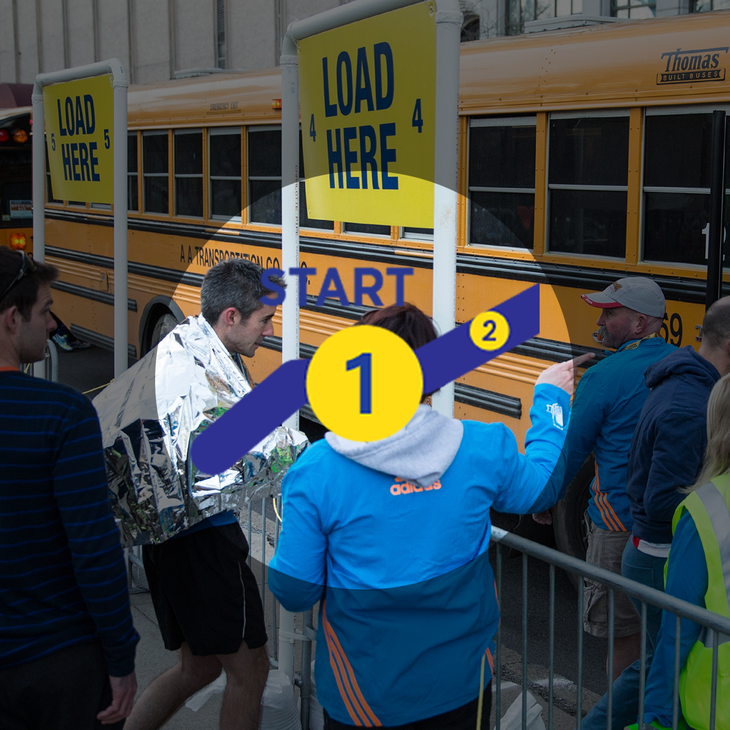
You'll be a little blurry-eyed as you take a 7 a.m. shuttle bus from Boston Common out to the start of the race in Hopkinton, but getting up early is the only way to ensure all 25,000+ runners can get there in an orderly fashion on time. Once you get dropped off at the Hopkinton High/Middle School parking lots, you'll have several hours to kill in the Athlete's Village, so take a newspaper or magazine to read, post-breakfast snacks to nibble on, a large bottle full of water or a sports drink to sip, and, just to be safe, your own personal roll of toilet paper. Also, mind the weather forecast in advanced and take an old long-sleeve shirt and maybe even sweatpants (and a light shell) that you don't mind parting with (or one that you can tie around your waist during the race).
Historic Hopkinton
Eventually, you'll walk down Grove Street to the intersection with Route 135 and join your starting wave behind the starting line adjacent to the Hopkinton Town Common opposite the Korean Presbyterian Church. The smallest village in the world of big city marathons, hospitable Hopkinton has opened its arms to marathon runners on the third Monday of April since 1924. That's when the start was moved west from Ashland to Hopkinton as it was lengthened to its official distance of 26 miles, 385 yards to conform to the Olympic standard.
It doesn't draw many tourists (or runners) the other 364 days of the year, so most don't know the town was founded in 1715 or that it was home to 11 boot factories in the 1850s. Your experience there will depend on the weather and how well you plan ahead (or how soon you get into the PortaPotty line). Expend as little energy as possible, except for visualizing a slower-than-everyone-else start of the race.
The Devilish Downhill Start

Everyone worries about trudging up Heartbreak Hill at Mile 21, but the most devastating hill on the course might be the 350-foot elevation drop runners encounter in the first 4 miles that often leads to a faster-than-expected opening 10K. If you go out too fast or haven't done long downhill tempo runs, your legs will feel as soupy as a bowl of Boston clam chowder even before you reach the Newton hills. Some age-group runners have been known to approach their 10K PR after a blazing start out of Hopkinton. Don't be like everyone else; instead, run conservatively over the first six miles.
The Middle Miles
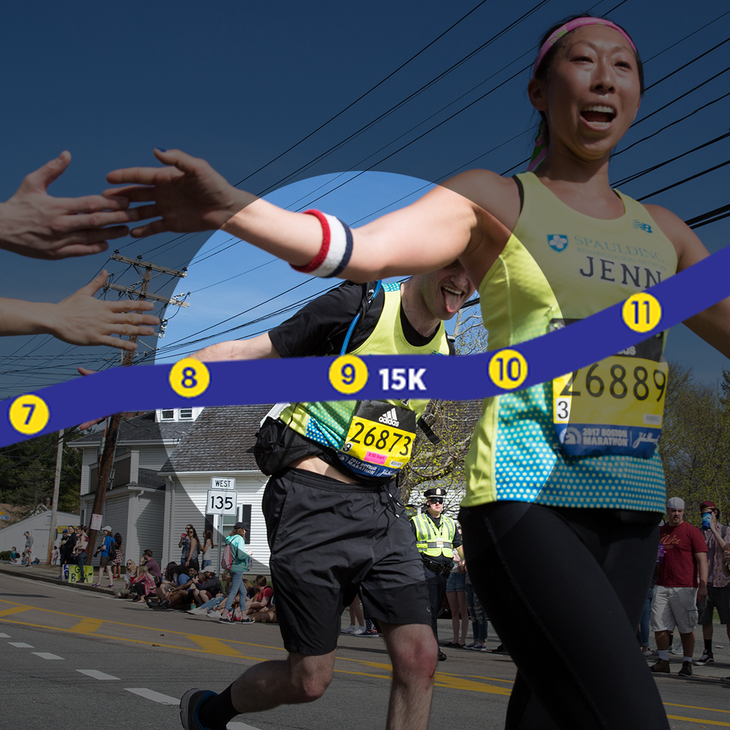
Once you get through the opening stretch of the course, you'll suddenly come to the realization that you actually have to run quite a long way before the race gets exciting again. The middle miles of the Boston Marathon-miles six to 13 through the towns of Framingham, Natick, and Wellesley--are kinda ho-hum, just like the middle miles of just about any road marathon. It's the flattest part of the course and there isn't much to see. But that's where you can get into a relatively easy rhythm, make sure you're staying hydrated and sufficiently fueled and keep your confidence high for the second half of the race. And just as you get lulled into what feels like a peaceful moment of calm, you start to hear a loud noise on the horizon that catches your attention.
RELATED: The Women’s Field at the 2023 Boston Marathon Is Loaded
The Wellesley Girls
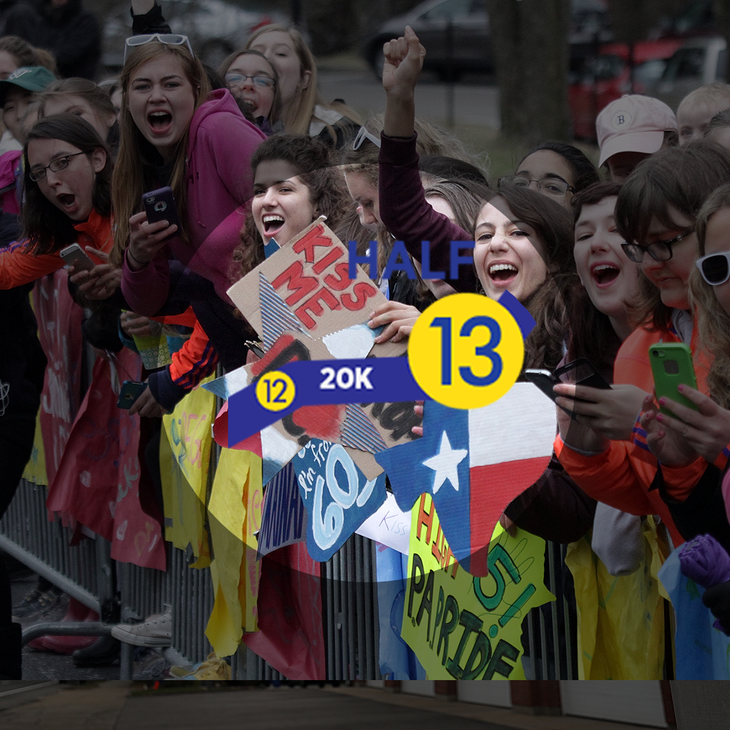
Long before you get to the all-women Wellesley College at the 12.5-mile mark, you can hear the students screaming wildly in support of runners. No race has such a concentrated, vociferous fan base as the Wellesley College "Scream Tunnel" that is an iconic hallmark of the Boston Marathon. You can hear the Wellesley girls hootin' and hollerin' from a half-mile away and see their "Kiss Me" signs along the right side of the road as you approach. (In 2019, Wellesley students made more than 650 signs, which can now be requested via an online Google doc submission process.)
Running past the Wellesley girls can provide a huge boost of energy and/or a temporary lapse of focus, but remember that stopping to oblige kiss requests can slow you down for 15 seconds to several minutes. You'll still hear the screaming girls as you cross the halfway mark, but by then it will be time to get serious again and prepare for what lies ahead.
The Newton Hills
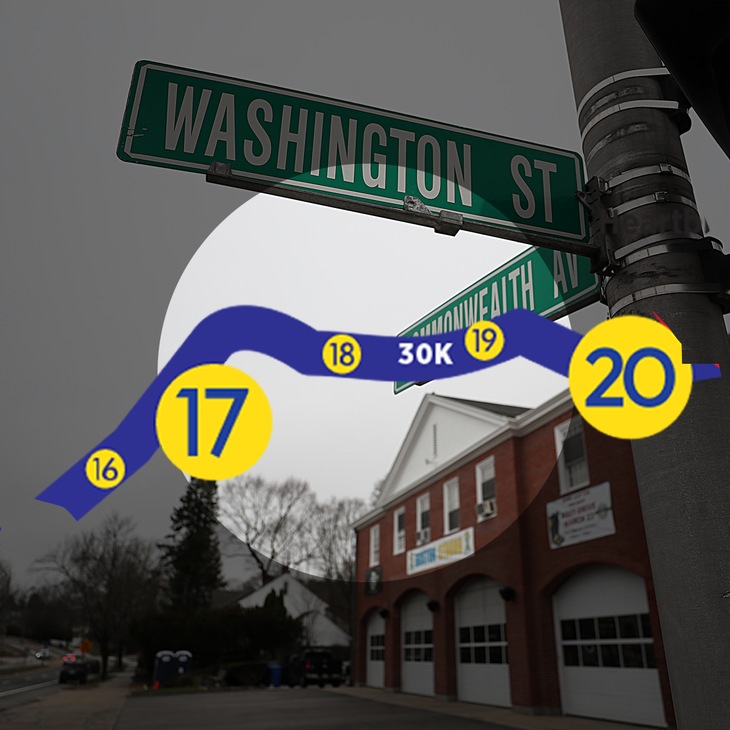
Heartbreak Hill gets most of the attention, but it's actually a series of four hills between miles 16-21 (plus the cumulative effect of sustained downhill running over the first 16 miles) that makes this part of the course so difficult. Still, Heartbreak Hill is a savage beast, rising 88 feet in about a half mile. This is where your race-paced training on undulating terrain will pay off. As you start up each of the hills, shorten your stride, swing your arms more vigorously, and accept the task at hand with a positive mindset.
There's still a lot of running to do once you crest the top of the hills and many runners consider the 2-mile downhill from the top of Heartbreak Hill to Cleveland Circle as the most difficult part of the course because you suddenly realize how much impact the initial downhill miles had on your legs. The final five miles to the finish line will be what makes or breaks your race, not how fast you run the hills. Just don't get too excited when you inevitably hear someone say, "It's all downhill from here!" There's still a lot of running to be done to reach the finish line.
Red Sox Mania
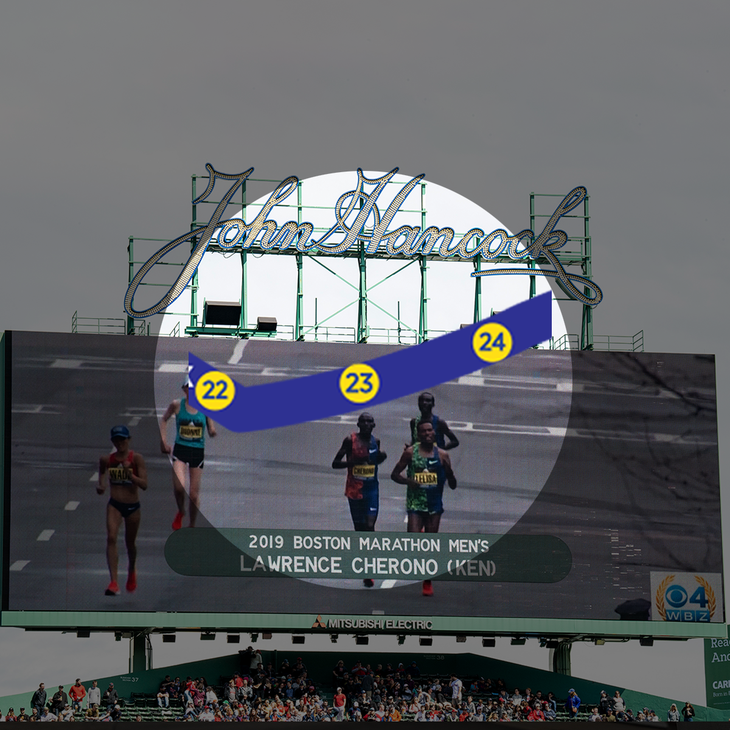
The marathon isn't the only sporting event honoring Patriots' Day in Boston. The locally beloved Red Sox play an 11 a.m. game at Fenway Park, located two blocks from the 25-mile marker of the marathon course. Once the game starts, spectators along the marathon route keep runners in tune with the game by updating the score on chalkboards and the radio broadcast pumping through loudspeakers. You're likely to hear fellow runners yell: "Let's Go Sawx!"
The Boston Marathon is an international event that feels as friendly as a local race and the spectators (many of whom have been watching the race from the same place with their families for years) are a big reason why. So even if you're a Yankees fan, try to appreciate Red Sox Nation cheering for you on the course. When the game ends in the early afternoon, there will be an odd mix of Sox fans mingling with marathon finishers at local bars and restaurants to celebrate Patriots' Day in earnest.
The Homestretch
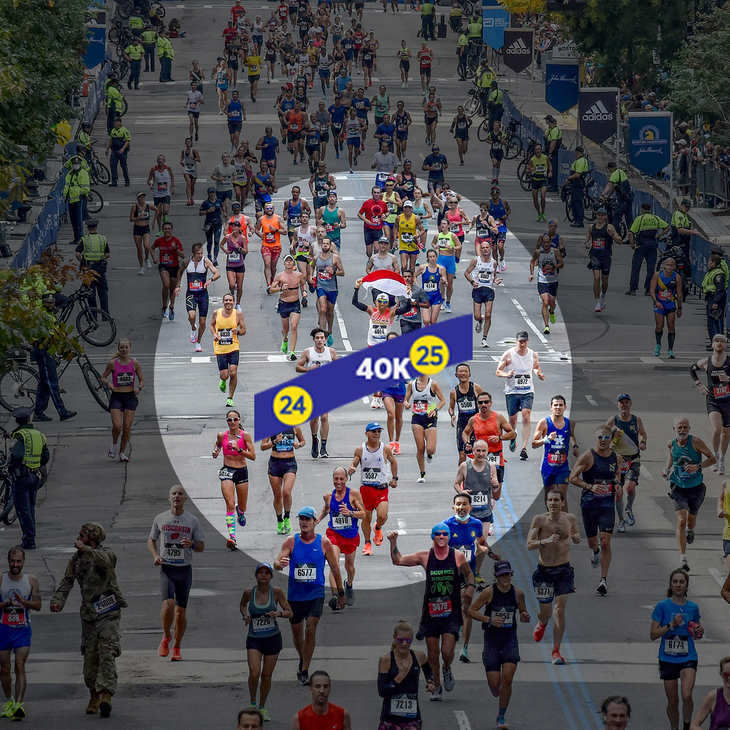
Once you run down the back side of the Newton Hills, you're home free, right? Runner beware: the final 2 miles of the course, although mostly flat, can be brutal. The slight rise in elevation up Hereford Street to Boylston Street can feel like a major hill and the final four blocks to the finish can feel like an eternity. But as you make the right on Hereford and left on Boylston, you'll suddenly feel a huge jolt of energy. The homestretch down Boylston is longer than you think--about 600 meters--and it's hard to run fast to the finish line. But no matter what your pace is, it's definitely epic and worth savoring.
Running to the Finish
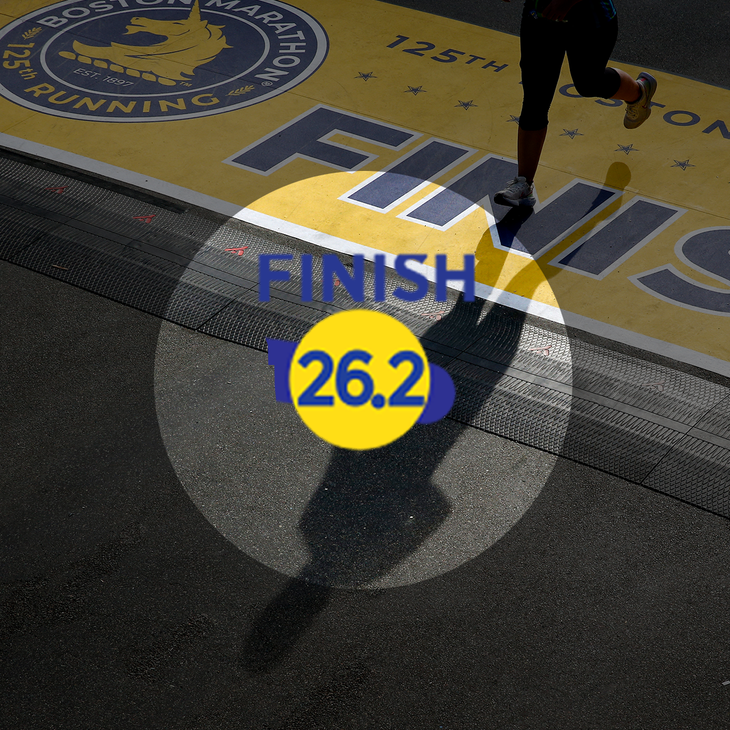
As you run the final two blocks toward the finish line adjacent to the Boston Public Library, think about the history of the race for a moment and all of the runners who came before you. (Runners in the Boston Marathon have finished on Boylston Street near Dartmouth Street since 1965. Prior to that it finished a block away on Exeter Street at St. James Avenue.) Remember, too, the spectators who were injured and killed during the horrific 2013 terrorist bombing incident. As runners, we should always keep Krystle Marie Campbell, Lu Lingzi, and Martin William Richard in our hearts (as well as Sean A. Collier, the MIT police officer who was killed several days later in pursuit of the terrorists). There were more than 300 people injured that horrible day, some who lost limbs and others who will never walk again.
When you approach the finish line, remember what it took to get you there--the training, the sacrifices, and especially the support you received along the way. No matter if you're en route to a new personal best time or if you're struggling and can't wait to stop running, finishing the Boston Marathon is a special moment that you should always cherish. It's a badge of honor that you can take with you forever, and it's on all of us who toe the line in Hopkinton to carry the history and the meaning of the race--and the memory of 2013--forward into the future. You might make it back next year and you might never have the chance to run it again, so try to cross the line with a big smile and a full heart and be proud and grateful for what you accomplished.
RELATED: Boston is Eliud Kipchoge’s Ultimate Challenge
For exclusive access to all of our fitness, gear, adventure, and travel stories, plus discounts on trips, events, and gear, sign up for Outside+ today.

